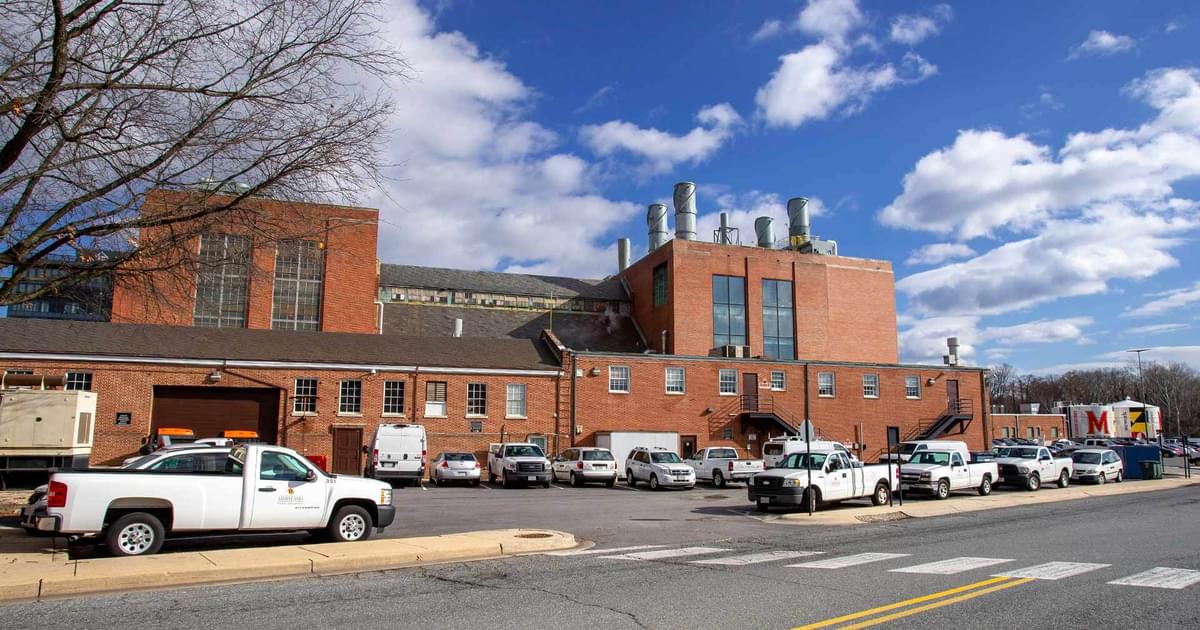UMD Moves Forward on New Energy System
UMD Moves Forward on New Energy System Maryland Today


The University of Maryland’s NextGen Energy Program

Introduction
The University of Maryland is seeking state approval to replace the campus’ aging power, boiler, and chiller plants, as well as key portions of the thermal distribution system. This initiative is part of the university’s long-term plan to pursue sustainable, fossil fuel-free energy alternatives. The project, known as the NextGen Energy Program, involves a $390 million investment in campus infrastructure and aims to significantly improve energy service on campus while achieving immediate environmental impact.
Sustainable Development Goals (SDGs)
- Cutting carbon emissions by 23%
- Reducing water consumption by 50% per year
President’s Statement
President Darryll J. Pines expressed the university’s commitment to a fossil fuel-free power plant under the NextGen Energy Program. He emphasized that achieving a carbon-neutral campus is a significant step, but reducing dependency on fossil fuels is the next crucial goal.
Public-Private Partnership
The NextGen program will be administered through a public-private partnership with Maryland Energy Impact Partners. The proposal is planned to go before the Board of Public Works, comprising the governor, treasurer, and comptroller, on May 15.
Current Power Plant Challenges
The university’s current power plant, which was last updated in 1999, is located along Baltimore Avenue near the intersection with Rossborough Lane. It operates at 60% capacity and is beyond its operating life. The aging parts are no longer manufactured, and the network of pipes is prone to leaks and occasional disruptions in power.
Impact on Campus Operations
The campus, with over 50,000 staff, students, and faculty, is comparable to a small city. Disruptions in energy services can have a significant impact on research, campus operations, classes, and student activities.
NextGen Program Benefits
- Sustainability
- Affordability
- Reliability
- Potential to meet campus climate change expectations
Improved Central Energy Plant
The improved central energy plant under the NextGen program would decrease the university’s use of fossil fuels. It would rely on a high-efficiency turbine that is renewable-fuel ready to generate both electricity and steam. This positioning allows the university to take advantage of various innovative fuel sources and technologies.
Environmental Responsibility
Professor Reinhard Radermacher, who directs the university’s Center for Environmental Energy Engineering, believes that the NextGen program offers a realistic option with the least deviation from existing technology while minimizing environmental impact. It maximizes the efficiency of buildings and reduces the size of the plant.
Carbon Neutrality and Funding
The NextGen program aims to surpass state standards and achieve carbon neutrality by 2025, 20 years ahead of state goals. Additionally, it is eligible for an estimated $69 million to $79 million in funding from the Biden administration as part of its Inflation Reduction Act.
Implementation Process
Once approved, the NextGen program will begin with a campus assessment of energy use on a building-by-building basis. This assessment will be followed by a phased reconstruction of the plant on the current plant’s site and the replacement of critical parts of the campus energy distribution systems.
SDGs, Targets, and Indicators
-
SDG 7: Affordable and Clean Energy
- Target 7.2: Increase substantially the share of renewable energy in the global energy mix
- Indicator 7.2.1: Renewable energy share in the total final energy consumption
-
SDG 9: Industry, Innovation, and Infrastructure
- Target 9.4: Upgrade infrastructure and retrofit industries to make them sustainable
- Indicator 9.4.1: CO2 emission per unit of value added
-
SDG 11: Sustainable Cities and Communities
- Target 11.6: Reduce the adverse per capita environmental impact of cities
- Indicator 11.6.1: Proportion of urban solid waste regularly collected and with adequate final discharge out of total urban solid waste generated, by cities
-
SDG 13: Climate Action
- Target 13.2: Integrate climate change measures into national policies, strategies, and planning
- Indicator 13.2.1: Number of countries that have communicated the strengthening of institutional, systemic, and individual capacity-building to implement adaptation, mitigation, and technology transfer
-
SDG 15: Life on Land
- Target 15.5: Take urgent and significant action to reduce degradation of natural habitats
- Indicator 15.5.1: Red List Index
Analysis
1. Which SDGs are addressed or connected to the issues highlighted in the article?
The issues highlighted in the article are connected to the following SDGs:
- SDG 7: Affordable and Clean Energy
- SDG 9: Industry, Innovation, and Infrastructure
- SDG 11: Sustainable Cities and Communities
- SDG 13: Climate Action
- SDG 15: Life on Land
2. What specific targets under those SDGs can be identified based on the article’s content?
The specific targets under the identified SDGs are:
- Target 7.2: Increase substantially the share of renewable energy in the global energy mix
- Target 9.4: Upgrade infrastructure and retrofit industries to make them sustainable
- Target 11.6: Reduce the adverse per capita environmental impact of cities
- Target 13.2: Integrate climate change measures into national policies, strategies, and planning
- Target 15.5: Take urgent and significant action to reduce degradation of natural habitats
3. Are there any indicators mentioned or implied in the article that can be used to measure progress towards the identified targets?
Yes, there are indicators mentioned or implied in the article that can be used to measure progress towards the identified targets:
- Indicator 7.2.1: Renewable energy share in the total final energy consumption
- Indicator 9.4.1: CO2 emission per unit of value added
- Indicator 11.6.1: Proportion of urban solid waste regularly collected and with adequate final discharge out of total urban solid waste generated, by cities
- Indicator 13.2.1: Number of countries that have communicated the strengthening of institutional, systemic, and individual capacity-building to implement adaptation, mitigation, and technology transfer
- Indicator 15.5.1: Red List Index
Table: SDGs, Targets, and Indicators
| SDGs | Targets | Indicators |
|---|---|---|
| SDG 7: Affordable and Clean Energy | Target 7.2: Increase substantially the share of renewable energy in the global energy mix | Indicator 7.2.1: Renewable energy share in the total final energy consumption |
| SDG 9: Industry, Innovation, and Infrastructure | Target 9.4: Upgrade infrastructure and retrofit industries to make them sustainable | Indicator 9.4.1: CO2 emission per unit of value added |
| SDG 11: Sustainable Cities and Communities | Target 11.6: Reduce the adverse per capita environmental impact of cities | Indicator 11.6.1: Proportion of urban solid waste regularly collected and with adequate final discharge out of total urban solid waste generated, by cities |
| SDG 13: Climate Action | Target 13.2: Integrate climate change measures into national policies, strategies, and planning | Indicator 13.2.1: Number of countries that have communicated the strengthening of institutional, systemic, and individual capacity-building to implement adaptation, mitigation, and technology transfer |
| SDG 15: Life on Land | Target 15.5: Take urgent and significant action to reduce degradation of natural habitats | Indicator 15.5.1: Red List Index |
Behold! This splendid article springs forth from the wellspring of knowledge, shaped by a wondrous proprietary AI technology that delved into a vast ocean of data, illuminating the path towards the Sustainable Development Goals. Remember that all rights are reserved by SDG Investors LLC, empowering us to champion progress together.
Source: today.umd.edu

Join us, as fellow seekers of change, on a transformative journey at https://sdgtalks.ai/welcome, where you can become a member and actively contribute to shaping a brighter future.







